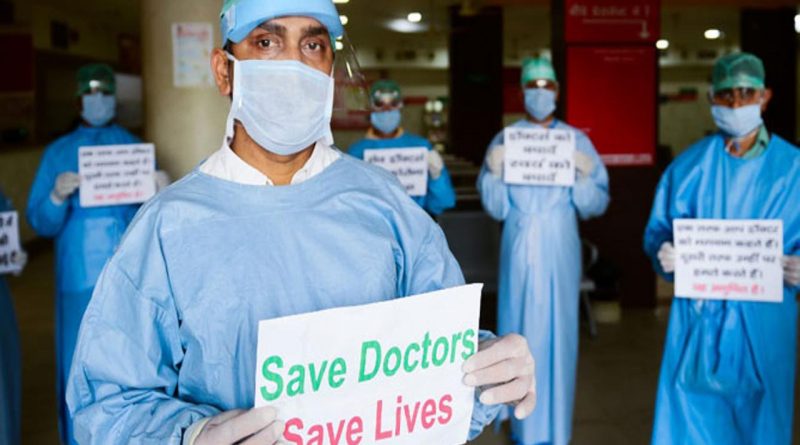Doctors in Distress

India’s fight against COVID-19 has witnessed frequent spectacles of violence against doctors and healthcare professionals. To prevent their recurrence, there should be better implementation of the law with enhanced provisions for protection of medical community. It is imperative to bring about a systemic change to curb this unsettling trend…
Dr Shambhavi Singh
The COVID-19 pandemic has brought to the fore the unsavory realities of India’s healthcare system and the dangers the health workers are exposed to. The countless number of attacks on the health professionals have done immense damage, lowering the morale and motivation of the healthcare workers waging a war on behalf of the country against the coronavirus.
During this crucial juncture when there is a need for increased sensitivity, sensibility and empathy what has come to the forefront is the complete opposite. The attacks were not specific to an area or a community; they have encompassed a number of cities throughout the country from Delhi, Indore, and Chennai to places in Bihar and Uttar Pradesh. What triggers this behavior? What can be done to stop this violence against the doctors?
Firstly, there should be better implementation of the law, along with suitable amendment in it. Even though Medical Protection Act is in place, it fails to be effective as it is neither featured in the Indian Penal Code (IPC) nor in the Code of Criminal Procedure (CrPC) which makes it increasingly difficult for the victim to file a complaint against the perpetrators.
Pertinently, the Epidemic Diseases (Amendment) Ordinances 2020, provides for non-bailable offence, up to seven years of imprisonment and Rs five lakh in fine. What needs to be done for further protection of doctors and healthcare professional is the effective implementation of this law in the absence of an epidemic as well. Secondly, there needs to be in place a security team to protect the doctors. Another contributing factor is the immensely disproportionate doctor-to-patient ratio with one doctor for 1400 patients. The recruitment of more doctors may decrease the violence against doctors as the patients will feel less anxious.
Additionally, from the perspective of the healthcare workers, young doctors should receive better training in regard to the communication skills. They should be trained to develop better interpersonal relationships and provide clear understanding of the procedures and treatment plan to the patients and their relatives. Emphasis should be laid on how to pacify and deal with the grieving relatives as more often than not the attack is instigated by a relative.
Lastly, it is imperative to bring about a systemic change to curb the violence against healthcare professionals. This change can only be achieved by starting a dialogue with the administration, health officials and the public. The mob violence against doctors during this pandemic should be taken as an initiation of such a movement. The dialogue will help us better understand mob mentality that comes to the fore in case of some unintended outcome of treatment. This understanding can only be achieved through dialogue. All the stakeholders of India healthcare sector need to come together to put an end to the violence against healthcare professionals.
(The author is Child Specialist, Dr. Shyama Prasad Mukherjee, Civil Hospital, Lucknow)

